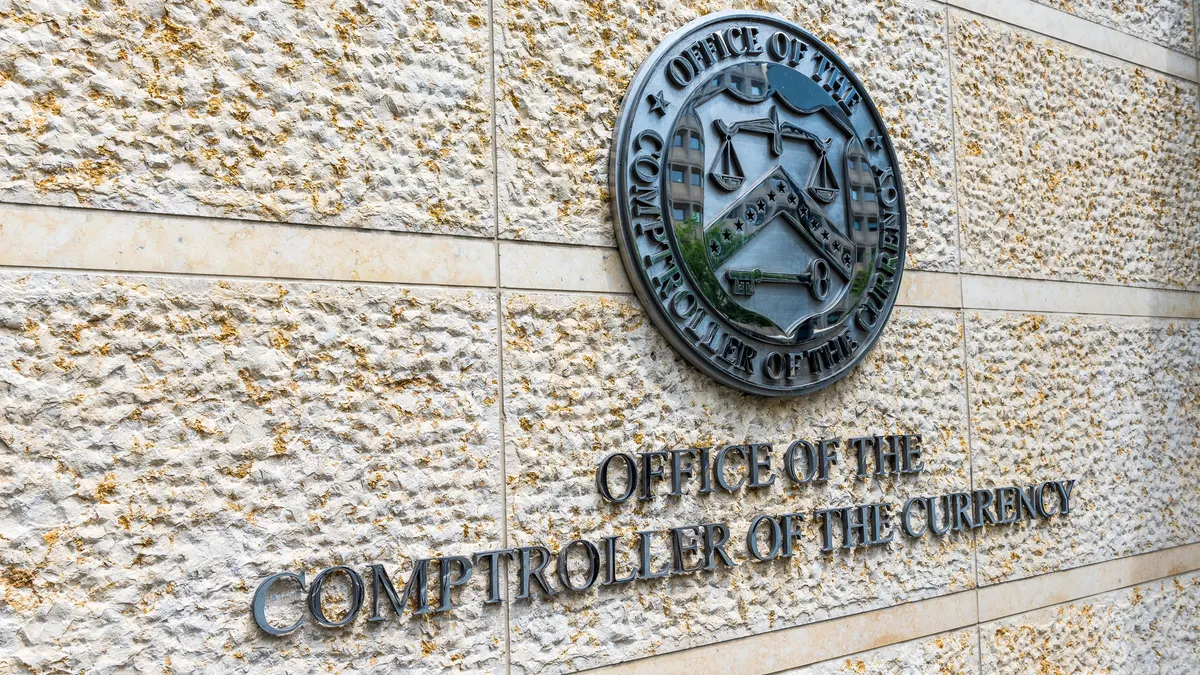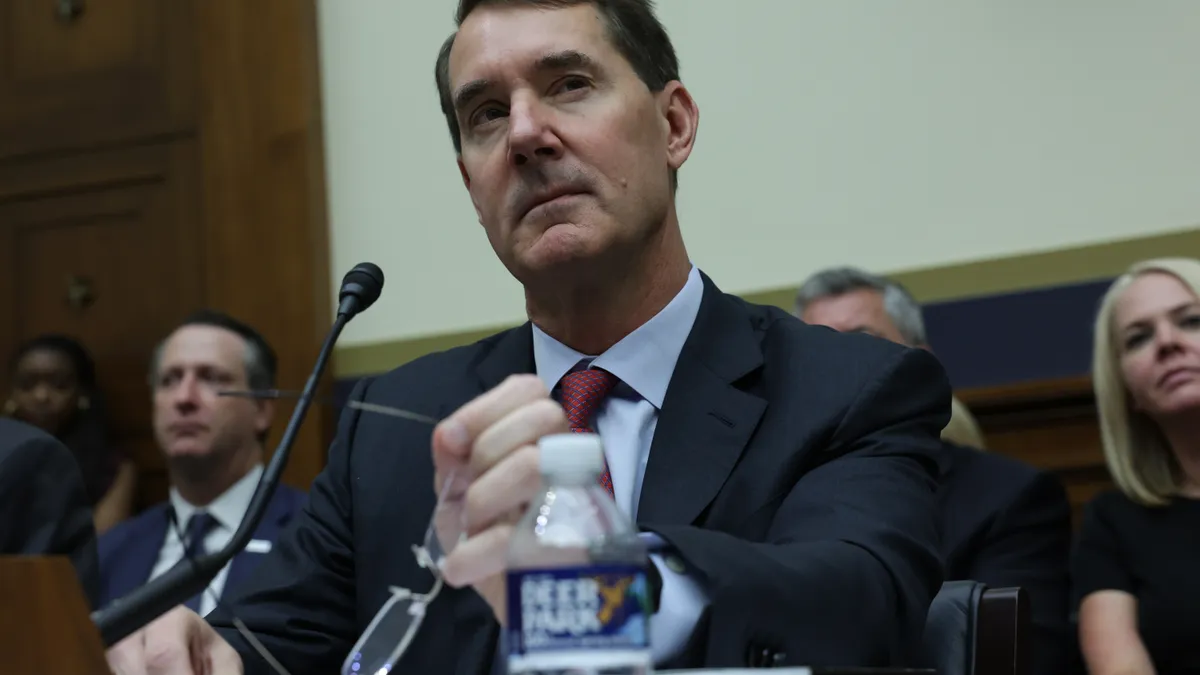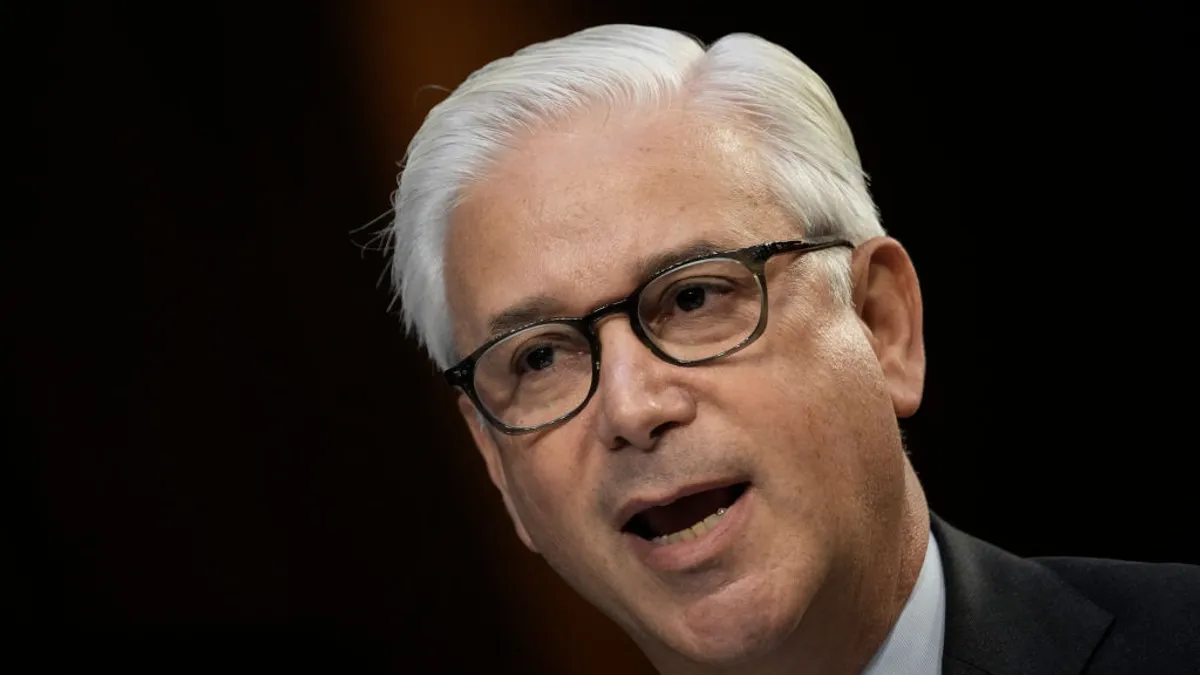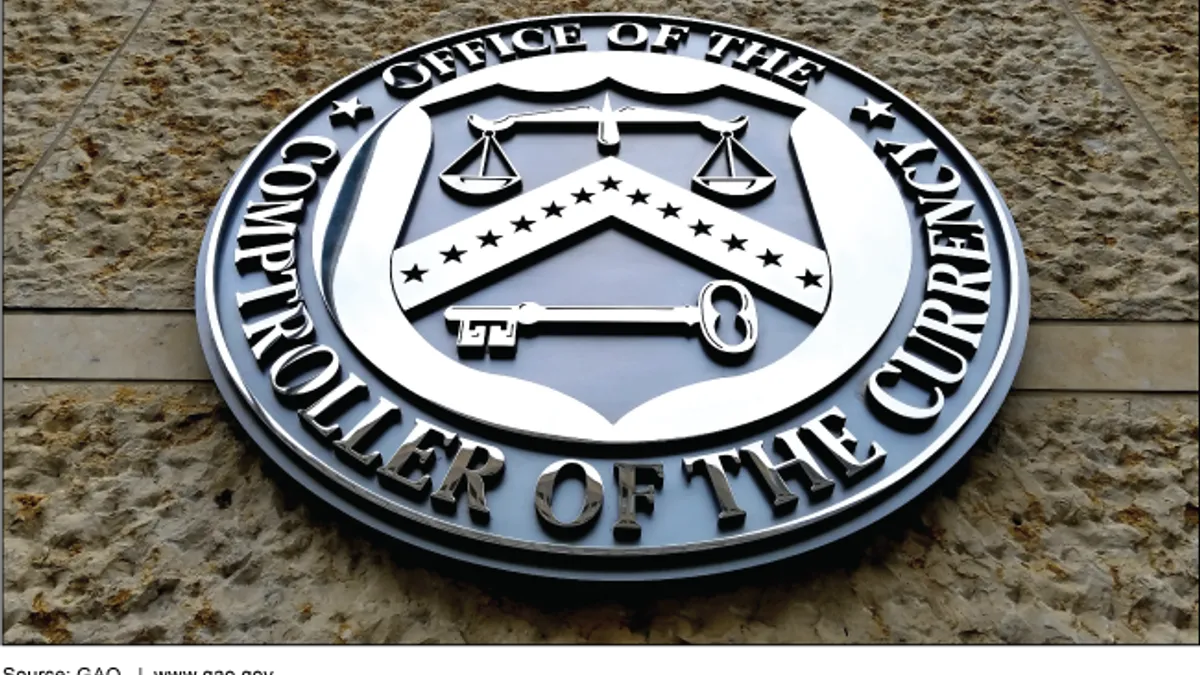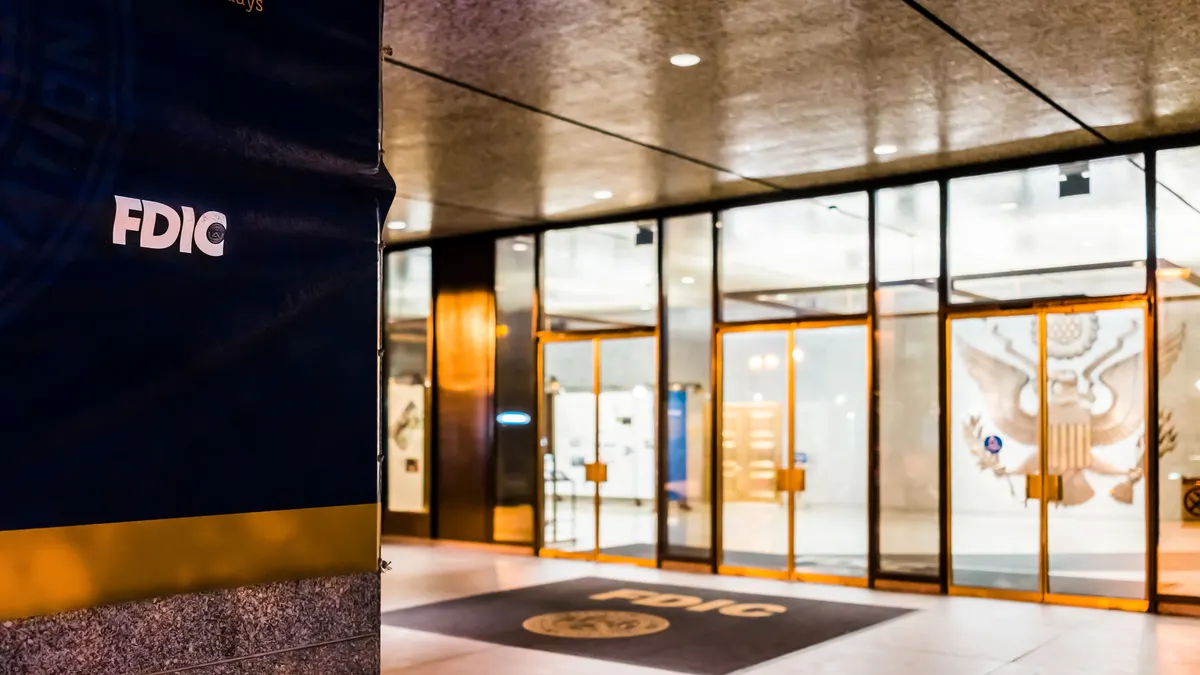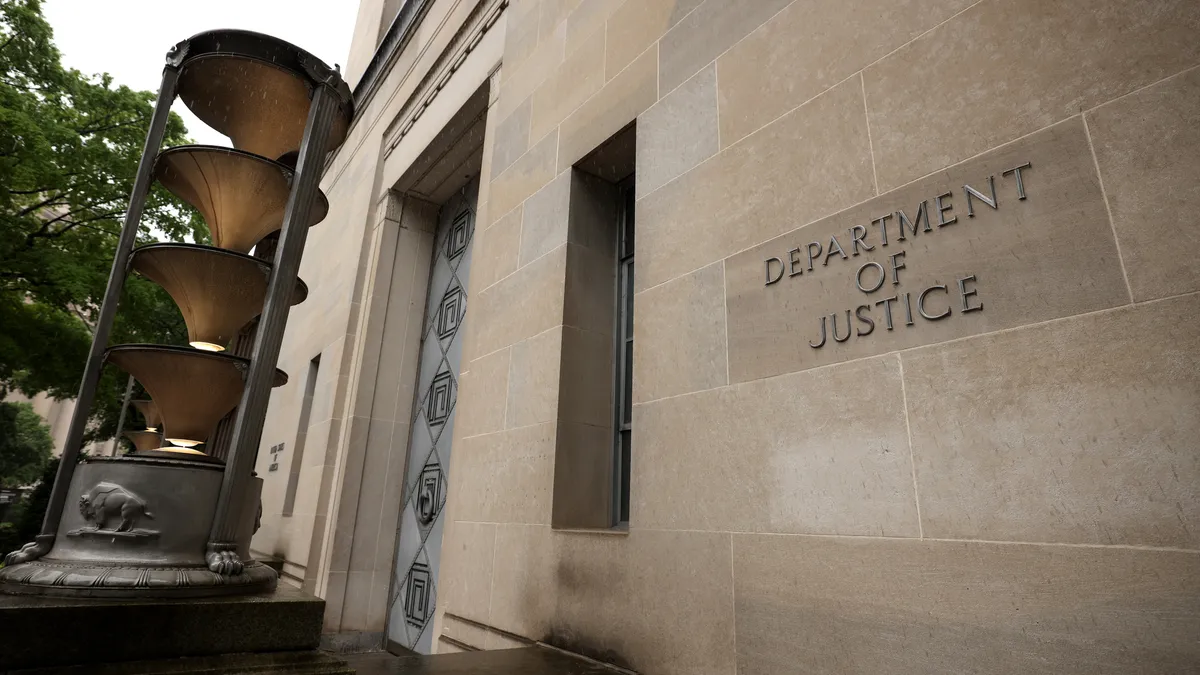The Federal Reserve’s vice chair for supervision, Michael Barr, laid out a long-awaited raft of potential changes Monday to banks’ capital requirements in a speech at Washington’s Bipartisan Policy Center. Here are nine takeaways:
1. Capital is king.
“Instead of trying to design rules to address every conceivable risk, regulators must focus broadly on resilience,” Barr said Monday, noting that capital is key to building resilience. “The beauty of capital is that it doesn't care about the source of the loss. Whatever the vulnerability or the shock, capital is able to help absorb the resulting loss and, if sufficient, allow the bank to keep serving its critical role in the economy.”
Holding more capital encourages a bank's managers and shareholders to prudently manage risk, he added.
2. Who will be required to hold more capital?
Barr said he will recommend that banks and bank holding companies with $100 billion or more in assets be subject to enhance capital requirements. This is consistent with proposed changes set in motion as early as last October, when the Fed approved U.S. Bank’s acquisition of MUFG Union Bank.
Under the changes, banks with assets of $100 billion or more would have to account for unrealized losses and gains in available-for-sale securities when calculating regulatory capital. Doing so, Barr said, would boost the transparency of regulatory capital ratios because it would better reflect actual loss-absorbing capacity.
“Our recent experience shows that even banks of this size can cause stress that spreads to other institutions and threatens financial stability,” he said, pointing to the failures of Silicon Valley Bank, Signature and First Republic.
The new rules would be less burdensome than current ones, Barr argued, because they wouldn't require a bank to develop a suite of internal credit risk and operational risk models to calculate regulatory capital.
Barr equated the recommendation with requiring the largest banks to hold an extra 2 percentage points of capital, or $2 more for every $100 of risk-weighted assets.
“Most banks already have enough capital today to meet the new requirements,” he said. “For the banks that would need to build capital to meet the requirements, assuming that they continue to earn money at the same rate as in recent years, we estimate that banks would be able to build the requisite capital through retained earnings in less than two years, even while maintaining their dividends.”
3. Long-term debt.
Barr also reiterated his aim to introduce a long-term debt requirement for institutions with $100 billion or more in assets.
“Such a measure would reduce losses borne by the Federal Deposit Insurance Corp.’s Deposit Insurance Fund, and provide the FDIC with additional options for restructuring, selling or winding down a failed bank,” Barr said.
4. Stress tests.
The framework for stress testing remains sound, Barr said, but regulators should review the global market shock portion and the test's approach to estimating operational risk.
“Banks have raised concerns that the changes to the risk-based capital framework … combined with the stress test, result in a ‘double counting’ of risk that is already captured in the minimum requirements,” Barr said. “Conceptually, this shouldn't be the case, as the changes in the risk-based capital requirements affect the way that minimum capital requirements are calculated, and the stress test is used to calculate the buffer. But we will seek comments.”
5. About those framework changes…
Standards for risk-based requirements should be updated to better reflect credit, trading and operational risk, consistent with the Basel Committee framework, Barr said.
Under Barr’s recommendation, banks would no longer rely on their own internal estimates of risk for lending activities.
“Experience suggests that banks tend to underestimate their credit risk because they have a strong incentive to lower their capital requirements,” Barr said. “Standardized credit risk approaches — meaning we apply the same requirements to each bank and not let each bank develop their own requirements — appear to do a reasonably good job of approximating risks.”
A firm's operational risk charge would be approximated based on its activities, Barr said. The charge could be adjusted upward based on historical operational losses.
For trading activities, meanwhile, firms would continue to be permitted to use internal models for most market risks. But banks would model risk at the trading desk level for particular asset classes rather than for the whole firm.
6. The G-SIB surcharge.
Barr said he would recommend measuring the indicators that determine the surcharge for global systemically important banks on an average basis over the full year rather than only at year-end.
Barr recommended measuring G-SIB surcharges in increments of 10 basis points rather than 50.
The first move would reduce the temptation for banks to temporarily alter the balance sheet at year end, Barr asserted. The second, he said, would reduce the surcharge’s "cliff effects.”
7. The countercyclical capital buffer.
Barr said he would recommend activating a positive buffer if macroeconomic conditions suggest it, and lowering capital buffers when a stressor, such as the start of the COVID-19 pandemic, would justify doing so.
8. Enhanced supplementary leverage ratio.
Barr said he would not recommend recalibrating the enhanced supplementary leverage ratio because the measure “generally would not act as the binding constraint at the holding company level.” He instead said the Fed would carefully monitor Treasury market intermediation.
9. Comments on recent bank failures and nonbank risks.
Barr called the collapses of Signature, First Republic and Silicon Valley Bank an “obvious” warning that banks need more capital to build resilience.
“Some industry representatives claim that inadequate capital had nothing to do with those bank failures. I disagree,” Barr said. “It was an unsuccessful attempt by SVB to raise capital that caused uninsured depositors to look more closely at how the bank was capitalized.”
Barr cautioned, too, that regulators and bank management can’t be expected to anticipate every emerging risk.
“We cannot fully appreciate how a specific vulnerability can interact with other vulnerabilities to amplify and propagate risk in the face of a shock, or multiple shocks. It is extremely difficult to identify shocks in advance,” he said.
Likewise, he added, shortcomings in capital and in management don’t operate in separate vacuums.
“It is not logical to argue that failings in supervision must mean that SVB was adequately capitalized — it wasn’t — or that supervision by itself can somehow assure safety and soundness throughout the banking system,” Barr said. “It is not a choice between supervision and capital regulation. Capital is and has always been the foundation of a bank's safety and soundness.”
Barr also sought to allay concerns that raising capital requirements would “push activity outside of the regulated financial sector.”
“We need to worry, a lot, about nonbank risks to financial stability,” he said. “The answer, however, is not lower capital requirements for banks, but more attention to those nonbank risks.”
Barr said the changes would only take effect if they are proposed and approved by the Fed, FDIC and Office of the Comptroller of the Currency.
Acting OCC chief Michael Hsu, at an American Banker event Monday, said there is "strong alignment" among federal regulators over the need for increased capital requirements.







